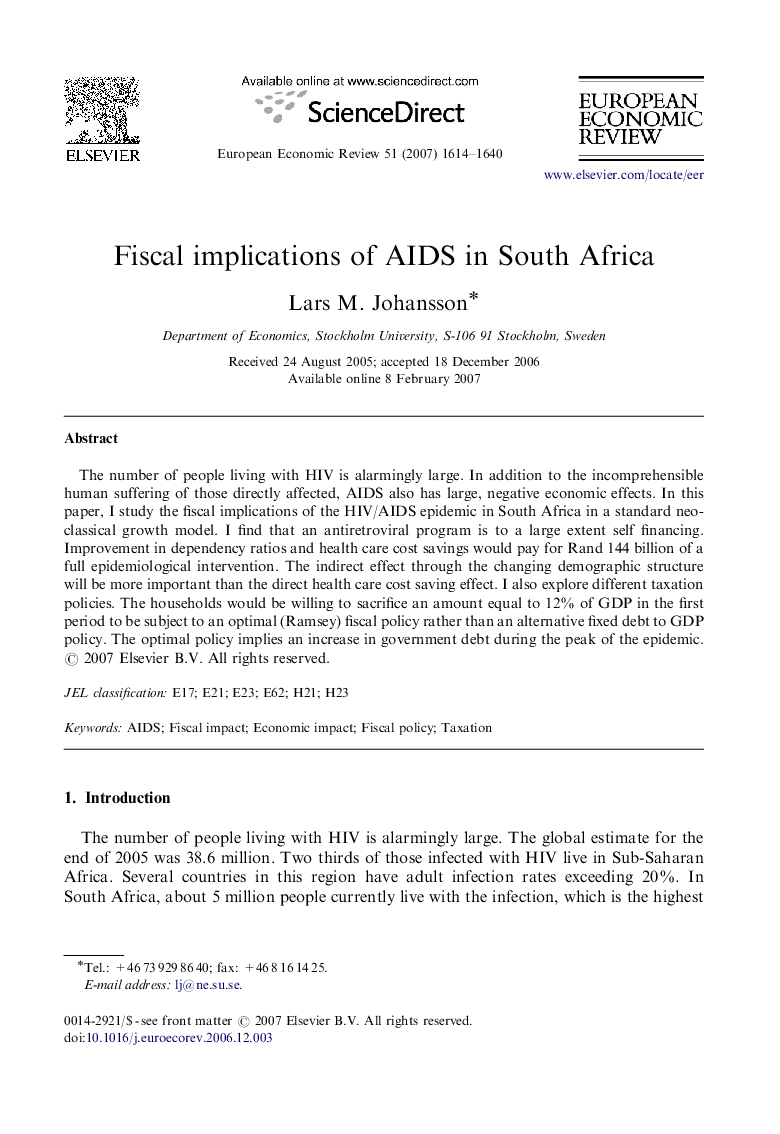| Article ID | Journal | Published Year | Pages | File Type |
|---|---|---|---|---|
| 5067700 | European Economic Review | 2007 | 27 Pages |
The number of people living with HIV is alarmingly large. In addition to the incomprehensible human suffering of those directly affected, AIDS also has large, negative economic effects. In this paper, I study the fiscal implications of the HIV/AIDS epidemic in South Africa in a standard neo-classical growth model. I find that an antiretroviral program is to a large extent self financing. Improvement in dependency ratios and health care cost savings would pay for Rand 144 billion of a full epidemiological intervention. The indirect effect through the changing demographic structure will be more important than the direct health care cost saving effect. I also explore different taxation policies. The households would be willing to sacrifice an amount equal to 12% of GDP in the first period to be subject to an optimal (Ramsey) fiscal policy rather than an alternative fixed debt to GDP policy. The optimal policy implies an increase in government debt during the peak of the epidemic.
